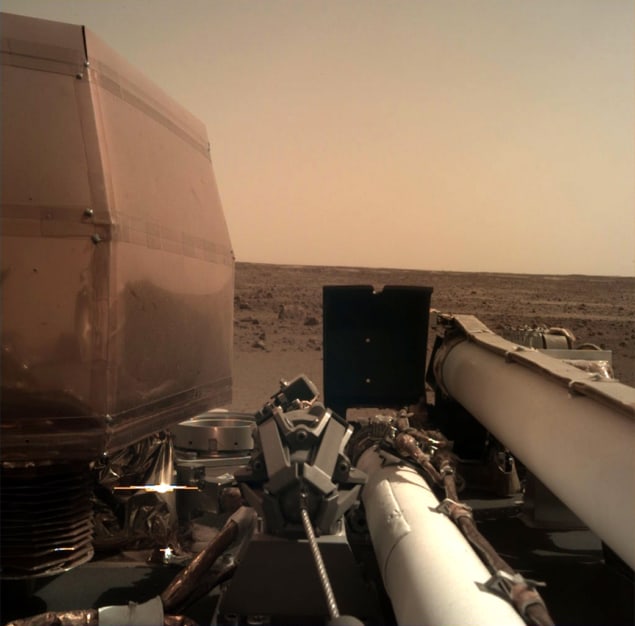
The first probe to study the deep interior of Mars has successfully landed on the red planet. After spending over six months travelling around 550 million kilometres to Mars, NASA’s $800m Interior Exploration using Seismic Investigations, Geodesy and Heat Transport (InSight) mission made a soft landing on the red planet in a flat region of the planet called Elysium Planitia. It will now spend the next couple of months deploying the craft’s instruments before studying Mars for at least two years.
We finally will explore inside Mars and deepen our understanding of our terrestrial neighbour
Lori Glaze
InSight took off on 5 May from Vandenberg Air force Base in California aboard an Atlas V rocket. The mission’s main aim is to study the planet’s interior by measuring its heat output and listening for seismic events on the planet. “Now we finally will explore inside Mars and deepen our understanding of our terrestrial neighbour as NASA prepares to send human explorers deeper into the solar system,” says Lori Glaze, acting director of NASA’s planetary science division.
InSight carries two cameras as well as three other instruments, all of which will be deployed by the craft’s robotic arm. These include a geodetic instrument built by NASA’s Jet Propulsion Laboratory (JPL) to determine the planet’s rotation axis as well as a device that can measure seismic waves travelling through the planet, made by a consortium led by France’s Paris-based National Centre for Space Studies. The third instrument, built by the German Aerospace Center in Cologne, will measure the flow of heat from the interior of the planet by burrowing a probe 5 m into the surface. NASA launches Mars Insight mission
Launched alongside InSight were two CubeSats, dubbed Mars Cube One (MarCO). They will test relaying communication signals from InSight to Earth and is the first time that such small satellites have been sent to another planet. “Just by surviving the trip so far, the two MarCO satellites have made a giant leap for CubeSats,” says Anne Marinan, a MarCO systems engineer based at JPL.



